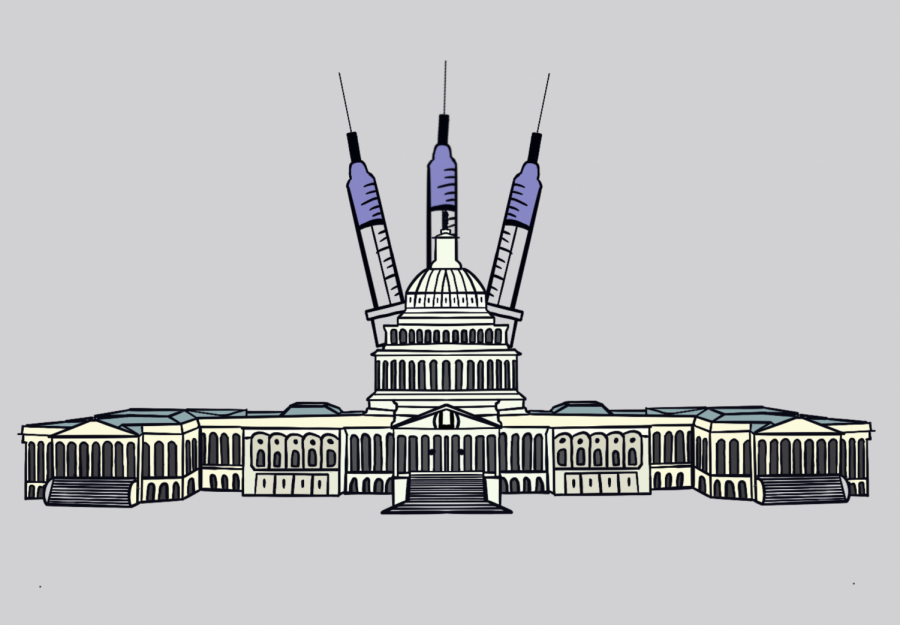Booster equity and the return to school
The national rollout of vaccines has proven highly effective by the significant decrease of COVID-19 cases and related deaths. But during the slow trudge back to normalcy, uncertainty concerning the future of our country continues to linger. Recently, there has been a large amount of discussion around the possible distribution of a third vaccine to the general public; and so far, two shots of the Pfizer vaccine have since warranted the full return to in-person school around the Bay Area.
Many Urban students share a similar sentiment, attributing the vaccine as the main factor for their security when returning to school. “I [feel] super safe, hearing that 100% of the student body and the teachers are vaccinated. Plus the mask mandates [by Urban]. It feels like kind of the safest you can be,” said Niko Asai ‘23.
But even post-vaccination, the Urban community must remain wary in the fight against COVID-19. According to the Centers for Disease Control and Prevention (CDC), over the duration of six-month clinical trials, data has shown the Pfizer-BioNTech vaccine had an overall efficacy of 91% against infection and 97% efficacy against severe illness. The CDC also observed that efficacy decreases by about 6 percent every two months following vaccination for Pfizer, and similar results for Moderna were observed. To combat this issue, the FDA first approved a Pfizer-only booster shot for the immunocompromised and elderly. Recently, the FDA also gave Pfizer the go-ahead to boost workers in high-risk settings, such as educators and healthcare workers. But they rejected the idea of deploying a third dose to other willing Americans.
“I think the data is inconclusive so far. A booster right now for me after two shots of Pfizer would boost my memory [protection against the virus], [and] would maybe give me a little bit stronger antibody and T cell response,” said Mary Murphy, infectious diseases teacher at Urban, “but there’s such a huge portion of the world that hasn’t had the first vaccine. So to me, the discussion of boosters has to involve a discussion of global vaccine equity.”
Murphy’s point finds itself to be immensely relevant at this time. Throughout the world, vaccination equity remains strongly correlated to GDP (Gross Domestic Product), where richer countries have a higher ability to get the vaccine, and therefore have higher vaccination rates. In a news release by the World Health Organization (WHO), “COVID-19 vaccine inequity will have a lasting and profound impact on socio-economic recovery in low and lower-middle-income countries without urgent action to boost supply and assure equitable access for every country.”
It’s a similar story in the United States. Although number one in overall GDP, looking at the CDC’s COVID-19 vaccination tracker, there are significant discrepancies in vaccination rates, especially when looking at communities of color, where they drop a disproportionate amount. “I don’t necessarily think you should take those resources away from people who need it,” Isaiah Moliga-Puletasi 24’ said. “Well, I would also add, people in underprivileged communities who also need the vaccine are working more in the field.”
Although the CDC has not yet approved the third dosage of a vaccine for the general population, experts from the US Department of Health and Human Services have commenced a plan to attempt to roll out a third vaccine booster sometime in the fall.
Whether or not a booster for non-immunocompromised Urban students becomes a reality, Urban’s Student Committee (StuCo) is ready. Moliga-Puletasi, a member of StuCo, expressed excitement to plan larger events this year, such as a dance and movie night made possible by the security the vaccine gives the Urban community. The frequency of sporadic events makes it nearly unpredictable how this school year will play out, but the return to normalcy is finally becoming tangible. He says, “[Get excited] for a big StuCo event [at] the end of November or even early next year!”


